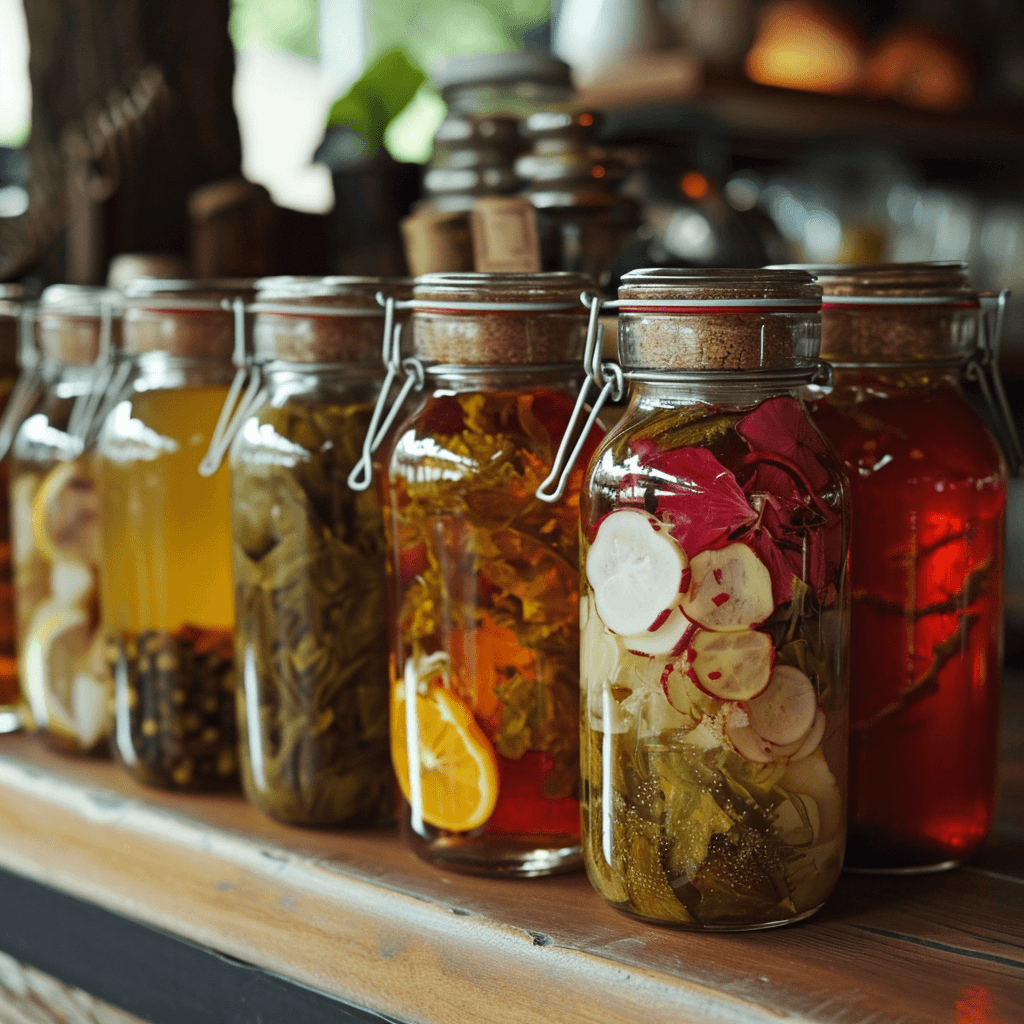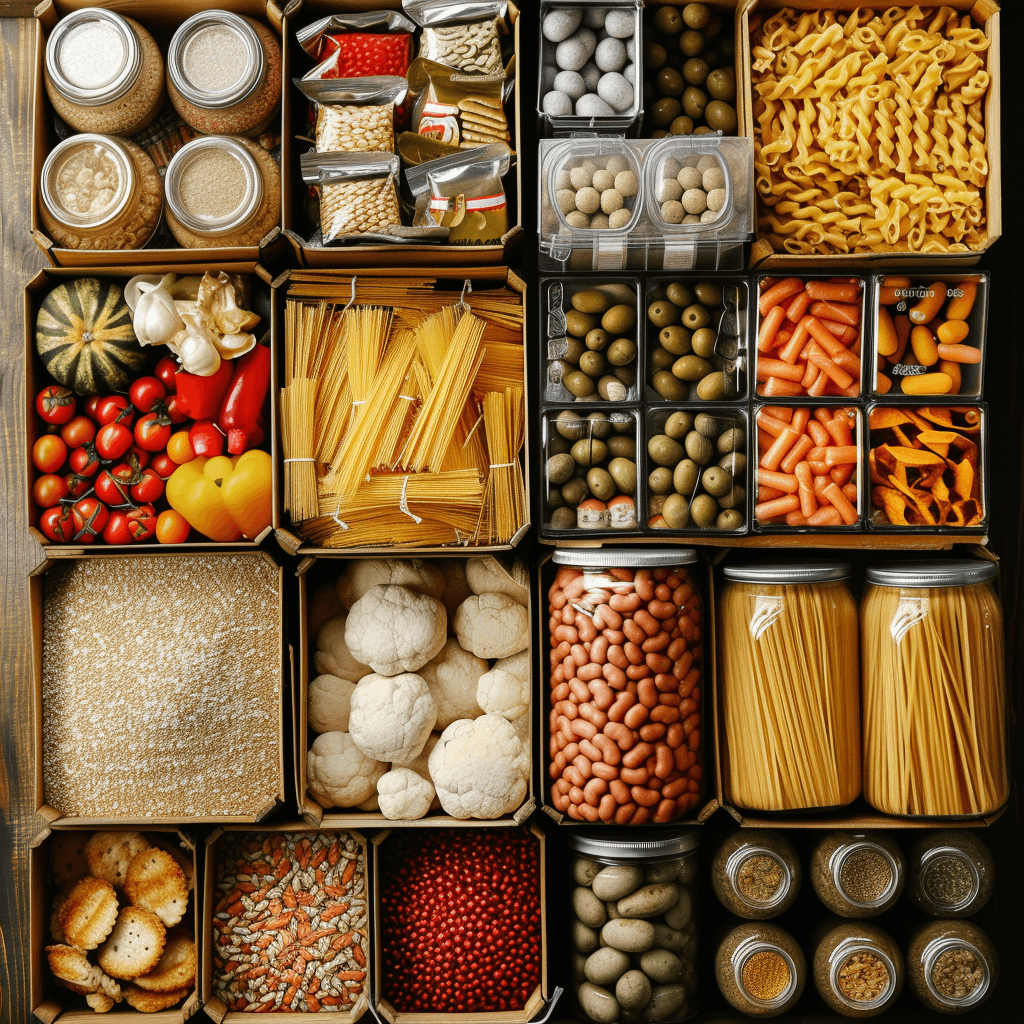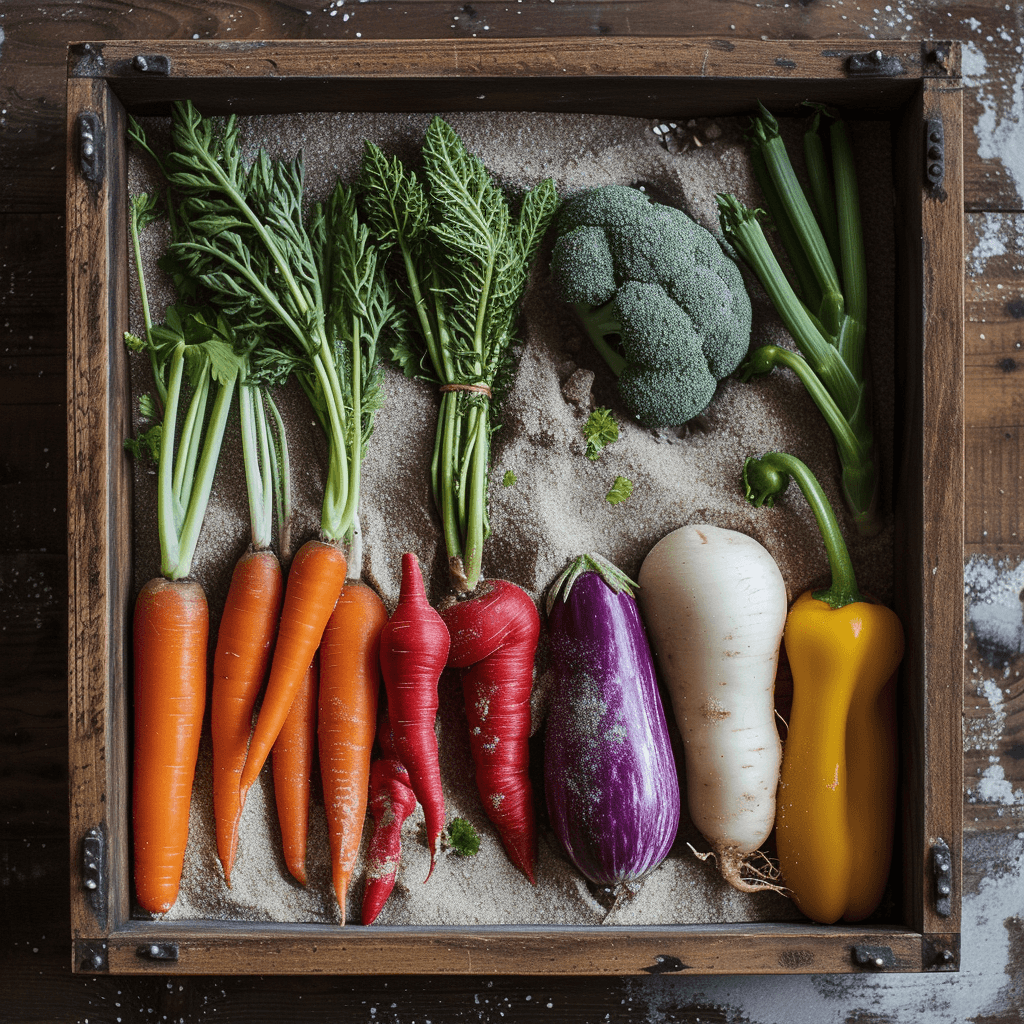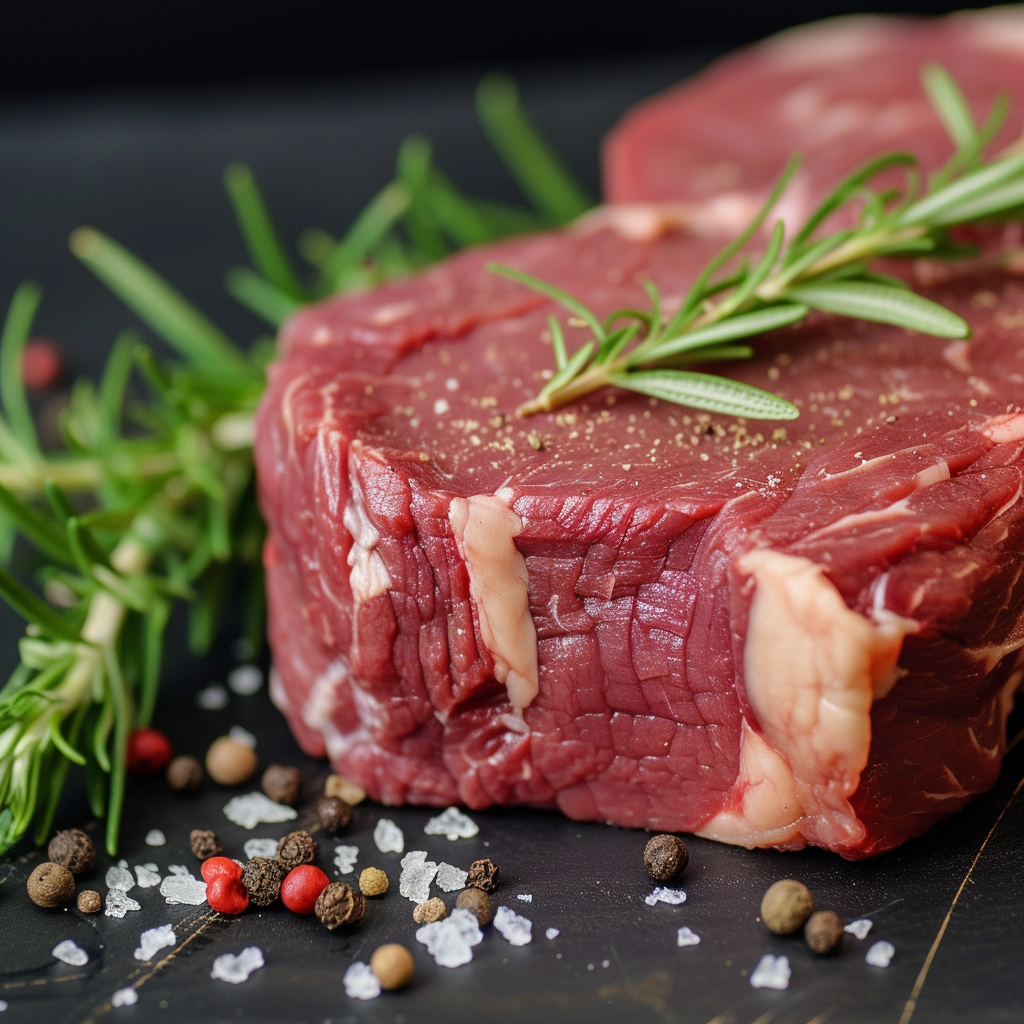Have you ever wondered how to preserve food without relying on modern refrigeration techniques? Well, one simple and effective method is using vinegar. Yes, vinegar! It’s not just for dressing salads or cleaning purposes. In fact, this versatile liquid has been used for centuries to preserve and extend the shelf life of various foods. But how does it actually work? Let’s dive into the science behind preserving food with vinegar.
When it comes to preserving food, vinegar acts as a natural preservative due to its acidity. The acetic acid in vinegar creates an environment in which bacteria, mold, and other microorganisms struggle to survive. By lowering the pH level of the food, vinegar inhibits the growth of harmful bacteria that cause spoilage and decay. This helps to prevent the formation of mold and ward off any potential foodborne illnesses.
Now, you might be wondering, what types of foods can be preserved with vinegar? Well, the answer is quite extensive. From fruits and vegetables to meat and even eggs, a wide range of foods can be successfully preserved using vinegar. Pickling is perhaps the most well-known method of food preservation with vinegar, where vegetables or fruits are submerged in a vinegar solution along with spices and herbs. This not only enhances the flavor but also extends the shelf life of the food. So, if you’re looking to learn more about the different techniques and benefits of preserving food with vinegar, keep reading our article for some valuable insights!
Preserving Food with Vinegar
Introduction to Food Preservation
Preserving food has been a common practice for centuries, allowing humans to extend the shelf life of perishable goods and enjoy them long after they would have spoiled. In today’s modern world, there are various methods of food preservation available, each with its own unique benefits and outcomes. One particularly effective and versatile method is the use of vinegar. Vinegar, a sour-tasting liquid made through the fermentation process, has been used for centuries as a natural preservative. In this article, we will explore the role of vinegar in food preservation, the various types of vinegar used, the benefits it offers, and the different methods of preserving food with vinegar.
The Role of Vinegar in Food Preservation
Vinegar plays a crucial role in food preservation due to its acidity. The acetic acid found in vinegar creates an inhospitable environment for the growth of harmful bacteria, molds, and yeasts, which are responsible for food spoilage. When added to food, vinegar helps to lower its pH level, making it less susceptible to bacterial growth and maintaining its freshness for a longer period. Additionally, vinegar imparts a unique flavor to preserved foods, enhancing their taste and making them more enjoyable to consume.
Types of Vinegar for Food Preservation
There are several types of vinegar available for food preservation, each with its own distinct flavor profile and characteristics. The most commonly used vinegars for food preservation are white vinegar, apple cider vinegar, and balsamic vinegar.
White Vinegar
White vinegar, made from distilled grains, is a versatile and readily available vinegar used in various culinary applications. Its clear and colorless appearance makes it ideal for pickling, as it does not alter the color of the preserved food. White vinegar has a sharp, tangy flavor that adds a crisp and acidic taste to pickled vegetables and other preserved recipes.
Apple Cider Vinegar
Apple cider vinegar, made from fermented apples, is known for its rich, fruity flavor and golden-brown color. It is often used in pickling recipes and marinades, adding a hint of sweetness to the preserved food. Apple cider vinegar is also praised for its potential health benefits, such as aiding digestion and regulating blood sugar levels.
Balsamic Vinegar
Balsamic vinegar is a dark, syrupy vinegar originating from Italy. It is made from cooked grape must and aged in wooden barrels, resulting in a complex and sweet flavor profile. While balsamic vinegar is more commonly used in salad dressings and drizzled over dishes, it can also be utilized in food preservation, particularly to enhance the flavors of jams and preserves.
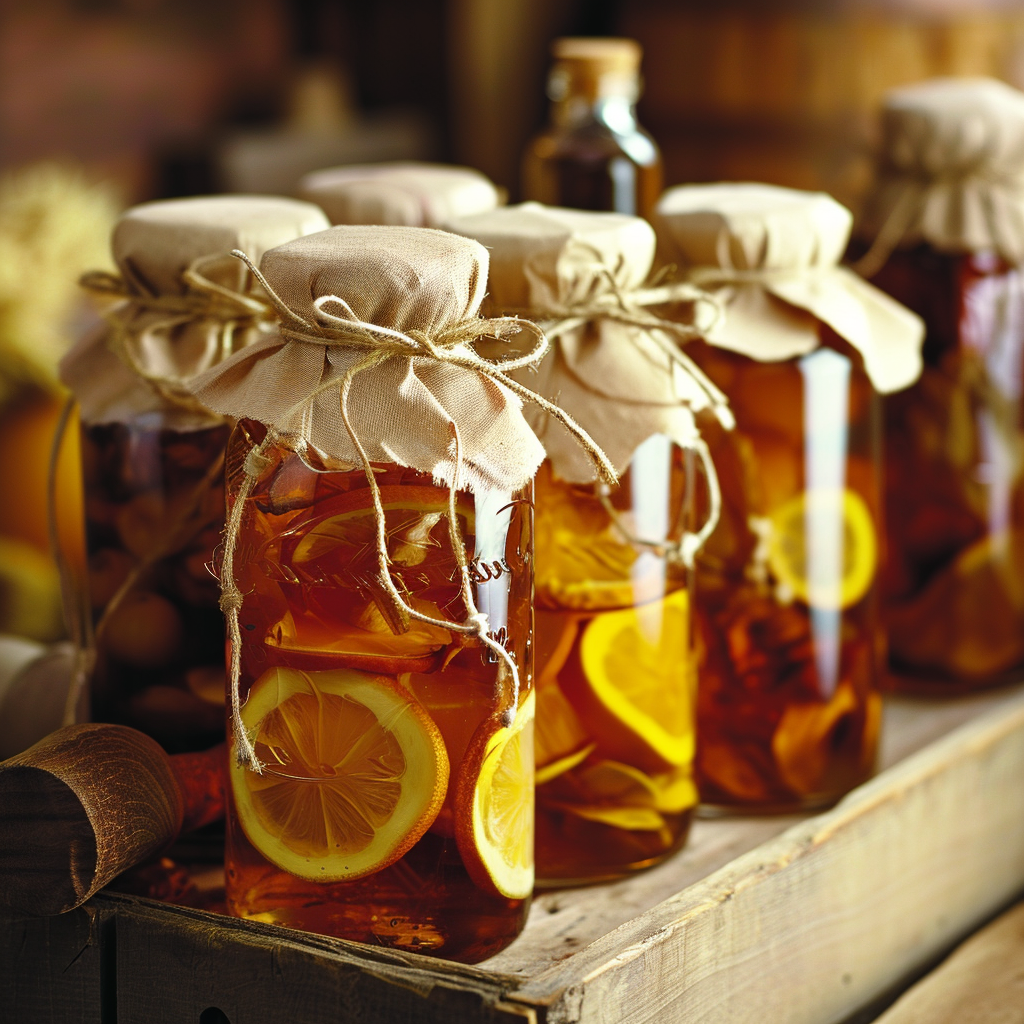
Benefits of Vinegar for Food Preservation
Using vinegar for food preservation offers several benefits beyond extending the shelf life of perishable goods.
Extended Shelf Life
One of the primary advantages of vinegar in food preservation is its ability to significantly extend the shelf life of preserved foods. By creating an acidic environment, vinegar inhibits the growth of bacteria and other microorganisms responsible for spoilage. This means that pickled vegetables, marinated meats, and other preserved foods can last much longer, allowing you to enjoy them well after their natural expiration date.
Inhibits Bacterial Growth
The acetic acid present in vinegar helps to inhibit the growth of harmful bacteria, such as Escherichia coli (E. coli), Salmonella, and Listeria. These bacteria can cause foodborne illnesses when consumed, leading to severe health complications. By using vinegar in food preservation, you can greatly reduce the risk of bacterial contamination and ensure the safety of your preserved food.
Enhances Flavor
Vinegar adds a distinctive and tangy flavor to preserved foods, enhancing their taste and making them more enjoyable to eat. Whether it’s the sharpness of white vinegar in pickled vegetables or the subtle sweetness of apple cider vinegar in marinades, the flavor profile of vinegar complements a wide array of ingredients and recipes.
Methods of Preserving Food with Vinegar
There are various methods of preserving food with vinegar, each designed to suit different types of ingredients and desired outcomes. Some of the most common methods include pickling vegetables, marinating meats, and making preserves.
Pickling Vegetables
Pickling is the process of preserving vegetables by immersing them in a brine solution enriched with vinegar and various herbs and spices. This method not only extends the shelf life of vegetables but also enhances their flavors and textures, resulting in delicious and tangy pickled vegetables. The brine solution, typically consisting of vinegar, water, salt, sugar, and spices, is heated and poured over the prepared vegetables. The vegetables are then left to soak in the brine for a designated period, allowing the flavors to infuse and the preservation process to take place.
Marinating Meats
Marinating meats in vinegar is another effective method of food preservation. The acidity of vinegar helps to tenderize the meat, making it more succulent and flavorful. Additionally, the antimicrobial properties of vinegar help to inhibit bacterial growth, ensuring the meat remains safe for consumption. Marinating meats in vinegar also allows the flavors of herbs, spices, and other marinade ingredients to penetrate the meat, resulting in a more flavorful and enjoyable culinary experience.
Making Preserves
Vinegar is a common ingredient used in the making of preserves, such as jams, jellies, and chutneys. When combined with fruits and sugar, vinegar acts as a natural preservative, preventing the growth of bacteria and yeast. The acidity of vinegar also helps to balance the sweetness of the preserves, creating a delightful contrast of flavors. Making preserves with vinegar allows you to enjoy the fresh flavors of fruits long after their seasonal availability.
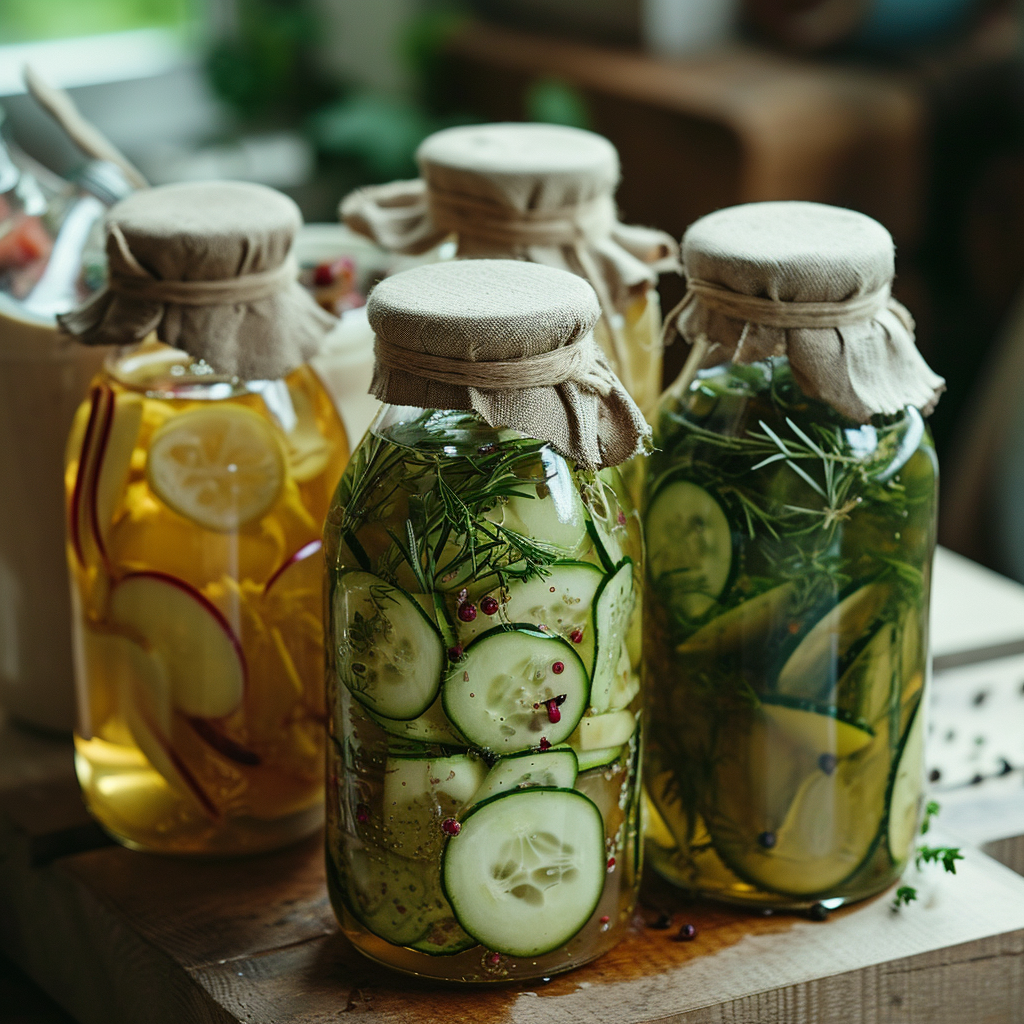
Step-by-Step Guide to Pickling Vegetables with Vinegar
Pickling vegetables with vinegar is a simple and rewarding process that allows you to enjoy tangy and crunchy vegetables throughout the year. Here is a step-by-step guide to pickling vegetables:
Selecting Fresh Vegetables
The first step in pickling vegetables is to select fresh, firm vegetables that are suitable for pickling. Common choices include cucumbers, carrots, bell peppers, onions, and green beans. Ensure that the vegetables are free from blemishes and signs of spoilage.
Preparing the Brine Solution
Next, prepare the brine solution by combining vinegar, water, salt, sugar, and your choice of spices and herbs in a large pot. Bring the mixture to a gentle boil, stirring until the sugar and salt have dissolved completely.
Sterilizing Jars and Lids
While the brine is simmering, sterilize your jars and lids by submerging them in boiling water for a few minutes. This step helps to eliminate any bacteria present and ensures the cleanliness of your pickled vegetables.
Packing and Sealing the Jars
Once your jars are sterilized, carefully pack the prepared vegetables into the jars, ensuring there is enough space between the vegetables for the brine to penetrate. Gently pour the hot brine into the jars, covering the vegetables completely. Remove any air bubbles by lightly tapping the jars on a countertop.
Storing and Maturing the Pickles
After sealing the jars with the lids, store them in a cool and dark place, such as a pantry or cellar. The pickles will need time to mature and develop their flavors, typically taking a few weeks. It is important to allow the pickles to fully mature before consuming them for the best taste and texture.
Tasty Recipes for Preserved Foods with Vinegar
Preserved foods made with vinegar offer a wide range of flavors and textures, making them versatile additions to any meal or snack. Here are a few tasty recipes to try:
Dill Pickles
Dill pickles are a classic preserved food enjoyed by many. To make dill pickles, pack fresh cucumbers, dill fronds, garlic cloves, and peppercorns in a jar. Fill the jar with a brine solution made from white vinegar, water, salt, sugar, and dill seeds. Let the pickles sit for at least two weeks to develop their signature flavors.
Pickled Beets
Pickled beets are a vibrant and tangy addition to salads and sandwiches. Boil beets until tender, then peel and slice them into desired shapes. In a large pot, combine apple cider vinegar, water, sugar, salt, and spices like cloves and cinnamon. Bring the mixture to a boil, then add the sliced beets and let them simmer for a few minutes. Pack the pickled beets into sterilized jars and seal tightly.
Pickled Onions
Pickled onions add a burst of flavor to salads, burgers, tacos, and more. Thinly slice red onions and blanch them in boiling water for a few seconds to remove their pungency. In a saucepan, combine white vinegar, water, sugar, salt, and your choice of spices, such as bay leaves or black peppercorns. Bring the mixture to a gentle simmer, then add the blanched onions and let them cook for a minute or two. Transfer the pickled onions into sterilized jars and allow them to cool before sealing.
Pickled Eggs
Pickled eggs are a unique and tasty treat that can be enjoyed on their own or as part of a charcuterie board. Hard-boil eggs and peel them carefully. In a saucepan, combine white vinegar, water, sugar, salt, and spices like mustard seeds and red pepper flakes. Bring the mixture to a boil, then reduce the heat and let it simmer for a few minutes. Place the peeled eggs in sterilized jars, then pour the hot brine over them. Allow the pickled eggs to cool before sealing and refrigerate for about a week before consuming.
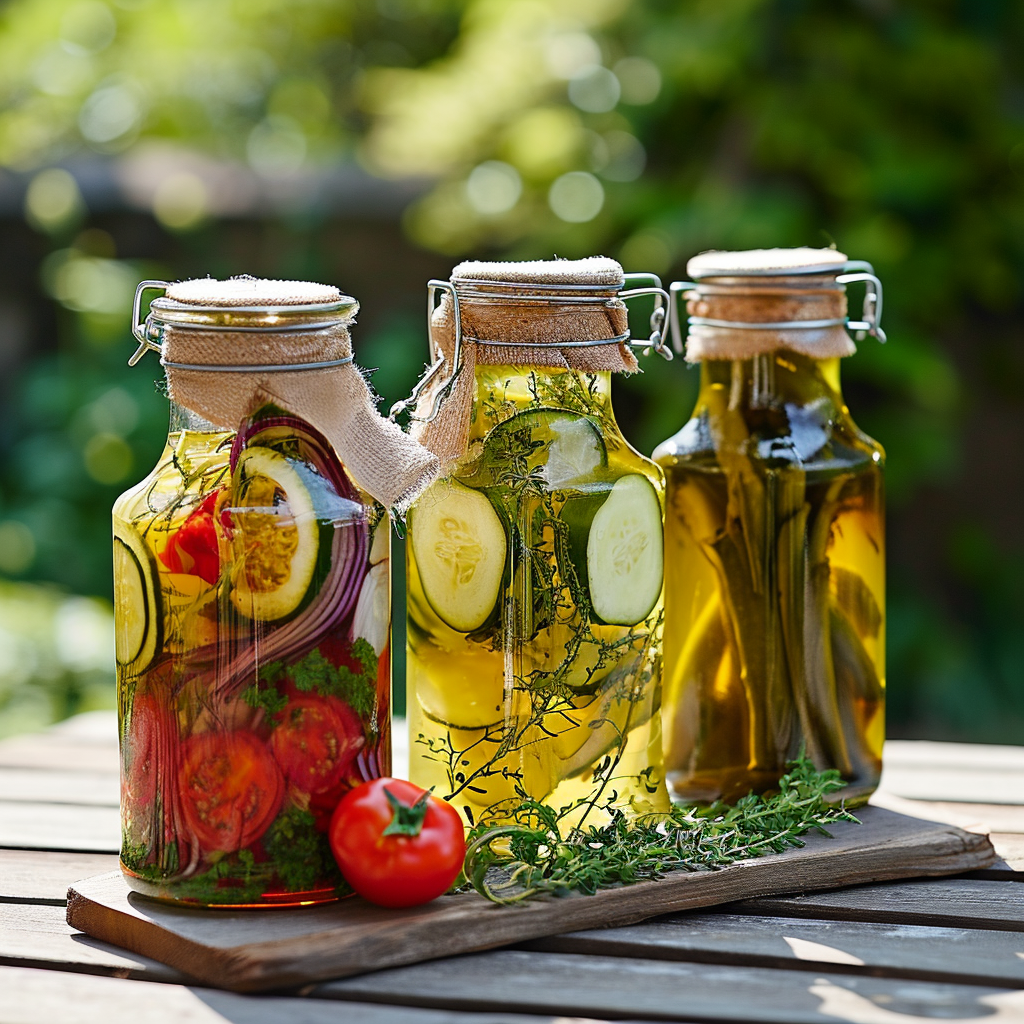
Safety Guidelines for Food Preservation with Vinegar
While preserving food with vinegar is a safe and effective method, it is important to follow some safety guidelines to ensure the best results and prevent any potential health risks.
Proper Sterilization Techniques
Before preserving food with vinegar, it is crucial to sterilize all jars, lids, and utensils involved in the process. This helps to eliminate any bacteria or microorganisms that could contaminate the preserved food. Boiling the jars and lids in hot water for a few minutes is an effective way to achieve sterilization.
Avoiding Cross-Contamination
To prevent cross-contamination and the spread of bacteria, it is important to handle preserved foods with clean and sanitized utensils. Avoid using the same utensils for raw and preserved foods, and always wash your hands thoroughly before and after handling preserved foods.
Storage and Shelf Life Recommendations
Proper storage is key to maintaining the quality and safety of preserved foods. Store pickled vegetables, preserves, and other vinegar-based foods in a cool, dark place, away from direct sunlight. Check the seals of the jars regularly to ensure they remain intact and the preserved food remains protected. It is also important to note that while properly preserved foods can last for several months or even years, the flavor and texture may diminish over time.
Common Mistakes to Avoid When Preserving Food with Vinegar
While preserving food with vinegar is a relatively straightforward process, there are some common mistakes that should be avoided to ensure the best results.
Incorrect Acid Levels
The acidity of vinegar is crucial in food preservation, as it inhibits bacterial growth and aids in the preservation process. It is important to use vinegar with an adequate acidity level, such as commercial vinegars specifically formulated for food preservation. Homemade vinegars or vinegars with low acidity may not provide the necessary preservation effects, resulting in spoilage of the preserved food.
Improper Sealing
Proper sealing is essential to prevent air and bacteria from entering the preserved food. Always ensure that the jars are properly sealed before storing them. Check the seals regularly, and discard any jars with damaged or compromised seals.
Underestimating the Importance of Cleanliness
Maintaining cleanliness throughout the entire preservation process is crucial in preventing the growth of harmful bacteria and ensuring the safety of the preserved food. Always clean and sanitize all utensils, work surfaces, and hands before handling preserved foods.
Alternative Methods of Food Preservation
While preserving food with vinegar is an effective method, there are alternative methods that can also be utilized, depending on personal preferences and the type of food being preserved.
Canning
Canning is a popular method of food preservation that involves heating the food in jars to kill any bacteria and sealing the jars to create an airtight environment. This method is commonly used for fruits, vegetables, and even meats. Canned foods can last for an extended period, maintaining their flavor and nutritional value.
Freezing
Freezing is another common method of food preservation that involves storing food at low temperatures to inhibit the growth of microorganisms. Freezing is suitable for a wide range of foods, including meats, fruits, vegetables, and prepared meals. Proper packaging, such as vacuum-sealed bags or airtight containers, is essential to prevent freezer burn and maintain the quality of the frozen food.
Dehydrating
Dehydrating involves removing the moisture from foods, thereby inhibiting bacterial growth and preserving their shelf life. Dehydrated foods, such as dried fruits, vegetables, and jerky, can be stored in a cool, dry place for an extended period. Dehydrating can be done using a food dehydrator, an oven, or even the sun.
Conclusion
Preserving food with vinegar is an ancient and effective method that allows you to enjoy the flavors of fresh produce long after their natural season. Vinegar, with its acidic properties, not only extends the shelf life of preserved foods but also enhances their flavors and safety. Whether it’s pickled vegetables, marinated meats, or delicious preserves, vinegar offers a versatile and natural solution for preserving a wide range of ingredients. By following proper techniques, safety guidelines, and avoiding common mistakes, you can successfully preserve food with vinegar, ensuring its freshness, flavor, and safety for extended periods. So, grab your jars, select your ingredients, and embark on a flavorful journey of preserving food with vinegar.

